 2008 Honda Accord VIII Dimensions, Size & Specs
2008 Honda Accord VIII Dimensions, Size & SpecsMeasurements of the 2008 Honda Accord VIII, engineered for optimal performance and comfort
| Dimensions | |
|---|---|
| Length: | 4725-4930 mm186.0-194.1 in15.5-16.2 ft |
| Width: | 1840-1847 mm72.4-72.7 in6.0-6.1 ft |
| Height: | 1440-1476 mm56.7-58.1 in4.7-4.8 ft |
| Trunk Capacity: | 464-467 liter16.4-16.5 cu ft |
| Weight Specifications | |
| Curb Weight: | 1480-1607 kg3263-3543 lbs |
| Maximal permitted Weight: | 1960-2030 kg4321-4475 lbs |
| Tire Specifications | |
| Rims Sizes: | 16-inch rims:
|
| Tire Sizes: |
|
The Honda Accord VIII, produced between 2007 and 2011, represents the eighth generation of the Accord sedan and is known for its balanced dimensions and practicality within the midsize vehicle segment. This generation offers a length ranging from 4725 mm to 4930 mm (approximately 186.0 to 194.1 inches), which positions it comfortably among competitors, providing ample interior space while maintaining maneuverability in urban environments. The width varies slightly between 1840 mm and 1847 mm (72.4 to 72.7 inches), offering a stable stance on the road without compromising parking ease.
Height measurements for the Accord VIII range from 1440 mm to 1476 mm (56.7 to 58.1 inches), allowing for a sleek roofline that enhances aerodynamics and aesthetic appeal, yet ensures sufficient headroom for passengers. The curb weight spans from 1480 kg to 1607 kg (3264 to 3540 lbs), depending on specific trim and equipment, which contributes to a solid driving experience without excessive fuel consumption. The maximum weight capacity varies between 1960 kg and 2030 kg (4321 to 4474 lbs), indicating a strong build capable of safely carrying passengers and cargo.
Luggage capacity is competitive, offering between 464 and 467 liters (approximately 16.4 to 16.5 cubic feet) of cargo space, suitable for everyday needs and longer trips. The wheel options on this generation include 16-inch rims sized 6.5J x 16, and upgraded variants with 17- and 18-inch wheels, allowing for a blend of comfort and sportiness.
Corresponding tire sizes range from 205/60 R16 up to 235/40 R18, providing versatility in handling and tire performance to suit different driving preferences. Overall, the Honda Accord VIII from 2008 to 2011 remains a key reference in the midsize sedan category, balancing size, comfort, and dynamic driving qualities, making it a reliable and practical choice for a broad range of drivers.
Discover the standout features that make the 2008 Honda Accord VIII a leader in its class
Have a question? Please check our knowledgebase first.
The Honda Accord VIII, produced between 2007 and 2011, has a length varying between 4725 mm and 4930 mm, depending on the specific model variant and trim. In imperial units, this translates roughly to a length of about 186.0 inches (15.5 feet) to 194.1 inches (16.2 feet). The length variation usually results from differences such as additional body features or slight trim-based design tweaks. This size places the Accord VIII within the midsize sedan category, offering a spacious interior and a balanced road presence without becoming unwieldy in urban environments.
The width of the Honda Accord VIII ranges from 1840 mm to 1847 mm, which is approximately 72.4 to 72.7 inches. This measurement typically excludes side mirrors, which add further width when considering parking or garage clearance. The relatively broad width helps provide a roomy cabin for passengers but does require attention when navigating tight parking spaces or narrow garages. When adding standard mirror widths, the car might approach or slightly exceed 2 meters (or about 6.6 feet) in total width, something to keep in mind for parking in narrower spots.
The Honda Accord VIII has a height that varies from 1440 mm to 1476 mm, roughly 56.7 to 58.1 inches. This relatively low stance enhances aerodynamic efficiency and a sporty look while still providing ample headroom for both front and rear passengers. Regarding garage storage, the height is comfortably under the typical residential garage door height, which is commonly around 2,133 mm (84 inches or 7 feet), so it should fit easily with clearance to spare.
The curb weight of the Honda Accord VIII ranges from 1480 kg to 1607 kg (approximately 3,260 to 3,542 pounds). The maximum gross weight, which includes the vehicle, passengers, cargo, and fluids, ranges between 1960 kg and 2030 kg (about 4,322 to 4,475 pounds). These figures reflect the car's robust construction, safety features, and build quality. The variation depends on engine types, trim levels, and optional equipment, influencing performance and handling characteristics.
The Honda Accord VIII provides a generous luggage capacity ranging from 464 to 467 liters, which translates to approximately 16.4 to 16.5 cubic feet. This capacity is quite competitive in the midsize sedan segment, allowing ample room for suitcases, groceries, sports equipment, or daily cargo needs. Its design balances passenger space and trunk volume effectively, ensuring that carrying capacity is practical without compromising passenger comfort.
Yes, the Honda Accord VIII fits comfortably into a standard residential garage. With a length between 4725 mm (approximately 15.5 feet) and 4930 mm (approximately 16.2 feet), a width of about 1840-1847 mm (72.4-72.7 inches), and a height under 1476 mm (58.1 inches), it is well within typical garage dimensions. Standard garages typically range from 2.4 to 3 meters wide (7.9 to 9.8 feet) and about 5.5 to 6 meters long (18 to 20 feet), so storing this vehicle poses no significant problems, allowing for opening doors comfortably and some extra space for movement or storage.
Compared to the Honda Accord VII (the previous generation), the Accord VIII is generally larger and slightly heavier. The VIII generation stretches between 4725 mm and 4930 mm in length, while the VII ranged closer to 4760 mm (187.4 inches) for most models. Width increased slightly from around 1785 mm to approximately 1840-1847 mm, enhancing interior space and road stance. The height of the VIII generation ranges from 1440 mm to 1476 mm, very similar or a little taller than the VII, which was about 1460 mm to 1470 mm high. Overall, the newer generation offers slightly more interior and luggage space, and updated styling, combining increased size with improved efficiency and tech.
The Honda Accord VIII stands out in its era as a well-sized midsize sedan, competitively spacious compared to contemporaries like the Toyota Camry, Nissan Altima, and Ford Fusion. Its length of 4725-4930 mm (186-194 inches) and width around 1840-1847 mm (72.4-72.7 inches) are pretty average for the segment, though slightly on the larger side for better cabin space. With a luggage capacity around 464-467 liters (16.4-16.5 cubic feet), it often surpasses rivals slightly, providing a very practical trunk for a family car. Moreover, Honda's emphasis on efficient packaging means the interior is thoughtfully designed to optimize passenger comfort and cargo volume effectively.
The Honda Accord VIII came equipped with rim sizes ranging from 16 inches to 18 inches with widths mainly at 6.5J for 16 and 17-inch rims, extending to 18-inch options as well. Tire sizes varied accordingly, including 205/60 R16, 215/60 R16, 225/50 R17, and 235/40 R18. Smaller rims with higher tire profiles (like the 16-inch tires) typically offer a smoother ride and absorb road imperfections better, making them favorable for comfort and everyday commuting. Larger rims with lower-profile tires (such as the 18-inch tires) enhance handling, cornering stability, and sporty feel at the cost of a firmer ride. Buyers could choose based on their priority between comfort and performance.
The Honda Accord VIII introduced several notable advances over its predecessors. Mechanically, it featured updated engines with improved fuel efficiency and reduced emissions, alongside refined transmissions for smoother performance. Its chassis was modernized for better ride quality, handling precision, and safety. Technologically, the generation offered advanced infotainment options, improved interior quality, and new safety features such as multiple airbags, stability control, and anti-lock brakes. Design-wise, it presented a more mature and aerodynamic exterior shape, contributing to reduced drag and enhanced overall aesthetics. The generation balanced comfort, practicality, and driving engagement, reinforcing its reputation as a reliable and popular midsize sedan.
Discover similar sized cars.
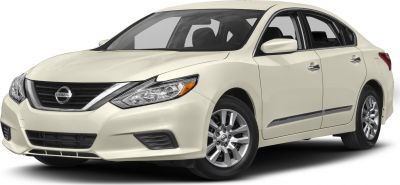
| Production: | 2016-2018 |
|---|---|
| Model Year: | 2016 |
| Length: | 4874 mm191.9 in |
| Width: | 1829 mm72.0 in |
| Height: | 1471 mm57.9 in |
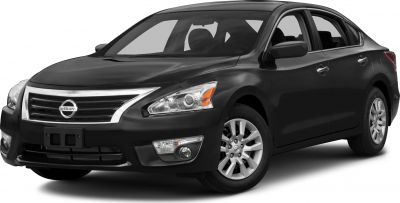
| Production: | 2012-2015 |
|---|---|
| Model Year: | 2012 |
| Length: | 4864 mm191.5 in |
| Width: | 1828 mm72.0 in |
| Height: | 1471 mm57.9 in |
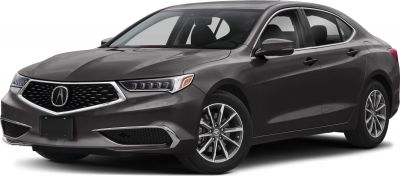
| Production: | 2017-2020 |
|---|---|
| Model Year: | 2018 |
| Length: | 4851-4869 mm191.0-191.7 in |
| Width: | 1854 mm73.0 in |
| Height: | 1448 mm57.0 in |
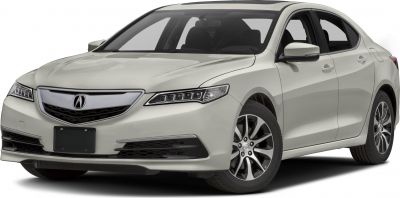
| Production: | 2014-2017 |
|---|---|
| Model Year: | 2015 |
| Length: | 4834 mm190.3 in |
| Width: | 1854 mm73.0 in |
| Height: | 1448 mm57.0 in |

| Production: | 1998-2003 |
|---|---|
| Model Year: | 1997 |
| Length: | 4775 mm188.0 in |
| Width: | 1800 mm70.9 in |
| Height: | 1415 mm55.7 in |
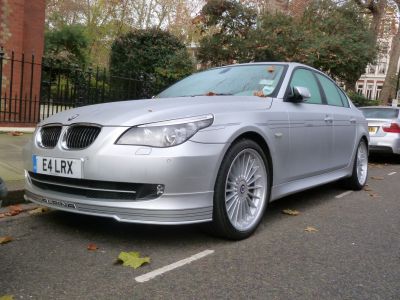
| Production: | 2005-2011 |
|---|---|
| Model Year: | 2005 |
| Length: | 4841 mm190.6 in |
| Width: | 1846 mm72.7 in |
| Height: | 1468 mm57.8 in |

| Production: | 1999-2003 |
|---|---|
| Model Year: | 2000 |
| Length: | 4775 mm188.0 in |
| Width: | 1800 mm70.9 in |
| Height: | 1415 mm55.7 in |

| Production: | 2018-2020 |
|---|---|
| Model Year: | 2018 |
| Length: | 4855 mm191.1 in |
| Width: | 2120 mm83.5 in |
| Height: | 1460-1466 mm57.5-57.7 in |
